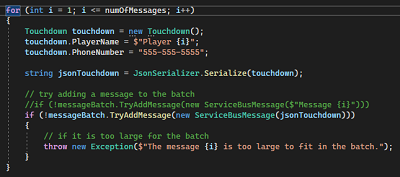


Tracking Azure History with Azure Resource Graph

Deep Dive into Social Media Analytics

Kubernetes and Challenges in Cloud-Agnostic Strategies

Exploring Service Bus with Fantasy Football

Azure Container Apps

Marketplace Office Hours (Business and Technical)- Register Now for February Sessions

Marketplace Office Hours (Business and Technical)- Register Now

Deconstructing Azure PowerShell APIs with Fiddler


 Light
Light Dark
Dark